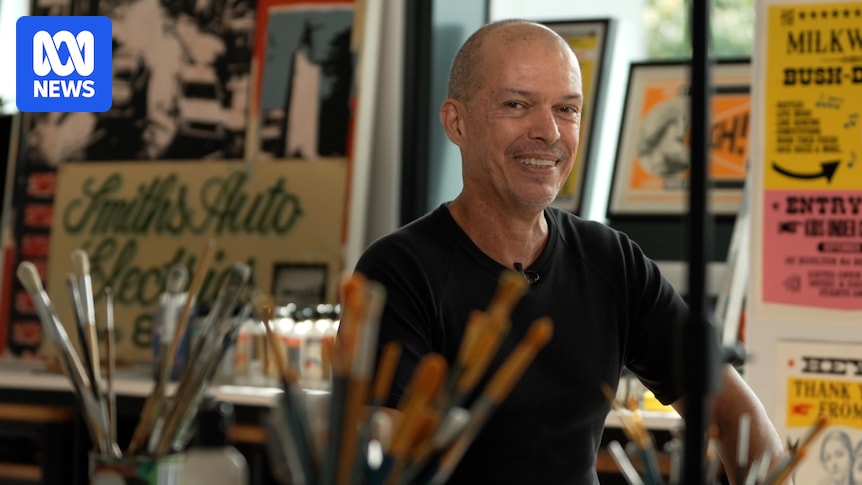
Artist Franck Gohier has become an integral part of Darwin’s cultural landscape. Yet, when he first arrived from France with his family 50 years ago, the cyclone-battered city seemed like an alien world. “It was like being on another planet, or in a science fiction movie or something,” Gohier recalls. “It was pretty wild.”
The impression of Darwin as an otherworldly place has deeply influenced Gohier’s art, which spans painting, sculpture, and printmaking. Since the 1980s, his work has woven together elements of Northern Territory and French culture, creating a unique narrative that resonates in galleries across Australia and beyond.
The Early Days: From Demolition to Art
Gohier’s formative years in Darwin were spent amidst the aftermath of Cyclone Tracy. His parents owned a demolition business, and young Franck often explored the mangroves, acting as an amateur archaeologist. “That still informs my work to a great deal,” he says. “There’s lots of strata, lots of history, the detritus of other people’s stories, which I bring into new contemporary storytelling.”
Some of the objects he discovered during these explorations have found their way into his art, adding layers and depth. This approach is evident in works like his Darwin-inspired twist on Andy Warhol’s famous Campbell’s Soup Cans series.
Academic and Professional Milestones
Gohier honed his artistic skills at the former NT University, now Charles Darwin University (CDU). This year, he returned to CDU as a resident artist and fellow at the new Danala art building on the city campus. His current project, a body of work for the upcoming Northern Territory Art Gallery in Darwin, remains under wraps but promises to reflect the territory’s essence.
His art often includes political and social commentary, a reflection of his curiosity and engagement with the world around him. Inspired by the stories of doctors and bush nurses in remote communities, Gohier has traveled extensively through the Kimberley, Central Australia, Arnhem Land, and the Tiwi Islands.
“I learned a great deal about Indigenous culture, about land rights, about the different seasons, about fishing, about hunting,” he says. “And in turn, I hope I imparted some knowledge as well, with my screen printing and printmaking skills.”
Empowering Indigenous Communities
Gohier’s skills have been instrumental in supporting Indigenous communities, particularly in generating income through art. “Instead of the artists in the community having to wait for the huge painting to sell, there’s always bread-and-butter money coming in from the printmaking as well,” he explains.
His commitment to community extends beyond art sales. In 1996, he developed an art program in Berrimah Prison under the former Ending Offending program. This initiative involved teaching Indigenous inmates art skills, facilitated by guest Aboriginal elders, as a form of therapy and skill-building.
“My job there was just to make the project run smoothly and to facilitate that process and to culminate in a huge exhibition,” Gohier says. “That show was really successful, both inside and outside.”
Legacy and Influence
Over the years, Gohier has donated much of his work to the Darwin community, embodying his belief that art can be created anywhere. “Have a look around you. What are the things that are right in front of your face, where you’re at, and use that as your source material,” he advises.
Despite his global recognition, Gohier remains focused on the authenticity of his experiences. “I’ve never really tried to make my art have a wider appeal or an international appeal or anything else,” he says. “I’m just interested in the vitality of my own experiences and the honesty that comes out of that about storytelling.”
As Franck Gohier continues to create and inspire, his journey from a cyclone-ravaged Darwin to a celebrated artist serves as a testament to the transformative power of art.







